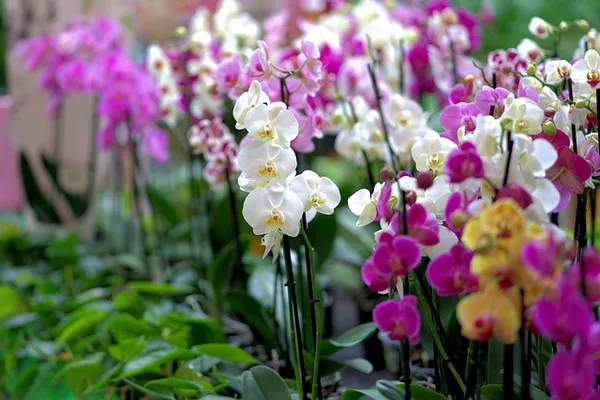Orchids, with their delicate and captivating blooms, are a favorite among plant enthusiasts. However, once the dazzling display of flowers begins to fade, many find themselves at a loss on how to care for the remaining orchid stems. Fear not, for this guide is here to unravel the mysteries and provide you with a step-by-step approach to ensure your orchid continues to thrive long after the blossoms have bid their adieu.
Understanding the Orchid Life Cycle
Before delving into post-flowering care, it’s essential to grasp the basic life cycle of an orchid. Orchids typically go through distinct phases: the growth phase, the flowering phase, and the dormant phase. Each stage requires specific care to maintain the plant’s health and encourage future blooms.
Observe and Assess: Post-Flowering Evaluation
Once your orchid has finished flowering, resist the urge to immediately cut back the stems. Take the time to closely observe the plant’s overall condition. Are the leaves still vibrant and healthy, or do they show signs of stress? Healthy leaves suggest a robust plant that can recover quickly.
Patience is a Virtue: Post-Flowering Dormancy
After the flowering phase, most orchids enter a period of dormancy. During this time, the plant conserves energy and redirects nutrients to the roots. It’s crucial to allow the orchid to complete this natural cycle before initiating any major interventions.
Pruning with Precision: Removing Spent Flower Stems
As the orchid enters dormancy and the stems turn brown and dry, it’s time to consider pruning. Precision is key in this step; using sterile scissors or pruning shears, cut the stem just above a node or nub. This strategic cut promotes new growth and prevents the spread of diseases.
Repotting Strategies: Evaluating the Need for a New Home
Post-flowering is an opportune time to assess if your orchid requires repotting. Inspect the roots; healthy roots are firm and green, while rotting roots appear brown or black. If the potting medium is breaking down or if the roots have outgrown the container, it’s time to repot.
Choosing the Right Medium: Orchid Repotting Essentials
When repotting, selecting the appropriate medium is crucial. Orchids typically thrive in a well-draining mix that allows air circulation around the roots. Orchid bark, sphagnum moss, and perlite are popular choices. Ensure the new pot provides ample space for growth, allowing the roots to spread comfortably.
Water Wisely: Adjusting Watering Practices Post-Flowering
As your orchid transitions from flowering to dormancy, adjust your watering routine accordingly. During the dormant phase, reduce the frequency of watering while maintaining humidity. Monitor the moisture level in the potting medium, and water only when it approaches dryness.
Feeding for Future Blooms: Orchid Fertilization Tips
To encourage future blooms, continue feeding your orchid during the post-flowering period. Opt for a balanced orchid fertilizer, diluted to half or quarter strength, and apply it every 2-4 weeks. Be cautious not to over-fertilize, as this can harm the delicate orchid roots.
Creating an Ideal Environment: Orchid Care Beyond Flowering
Orchids are sensitive to their surroundings, and maintaining an optimal environment is essential for long-term health. Provide adequate light, preferably filtered or indirect sunlight. Maintain a consistent temperature, avoiding extreme fluctuations. Adequate air circulation is also crucial, preventing the development of fungal issues.
Patience Rewarded: Waiting for the Next Bloom Cycle
After completing the post-flowering care routine, it’s time to exercise patience. Orchids typically bloom once or twice a year, depending on the species. During this waiting period, observe your orchid’s response to the care provided and make adjustments as needed.
Troubleshooting: Common Post-Flowering Challenges
Even with meticulous care, orchids may encounter challenges post-flowering. Keep an eye out for issues such as yellowing leaves, pests, or fungal infections. Promptly address these issues to prevent them from impacting the overall health of your orchid.
Conclusion
Caring for orchids extends far beyond the mesmerizing flowering phase. With a thoughtful and strategic approach, you can ensure your orchid remains healthy, vibrant, and ready to grace you with its breathtaking blooms in the seasons to come. By understanding the orchid life cycle, practicing patience, and implementing post-flowering care techniques, you’ll unlock the secrets to nurturing these enchanting plants for long-lasting beauty and joy.


